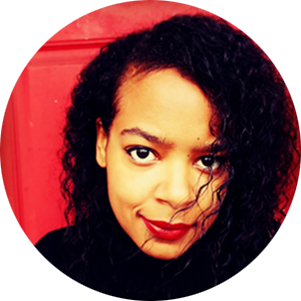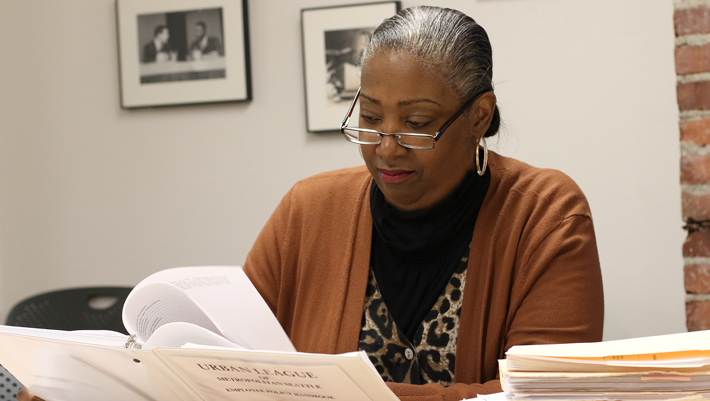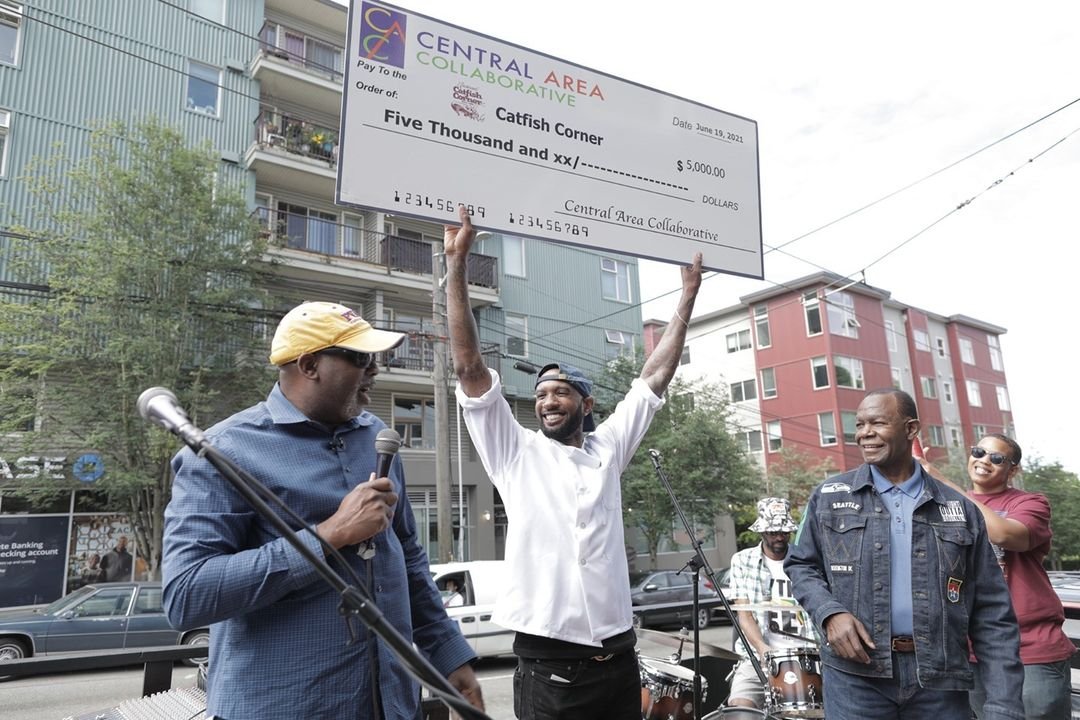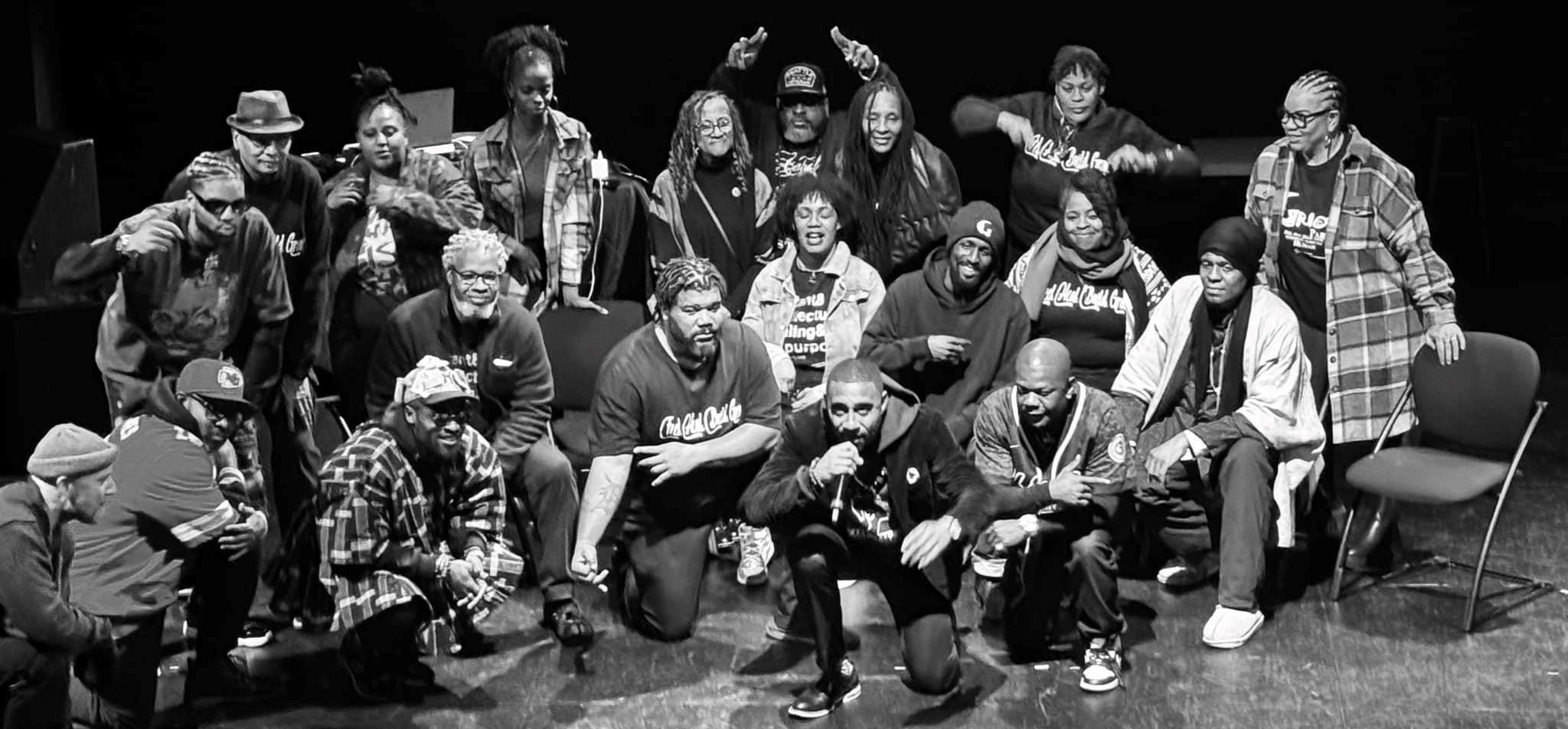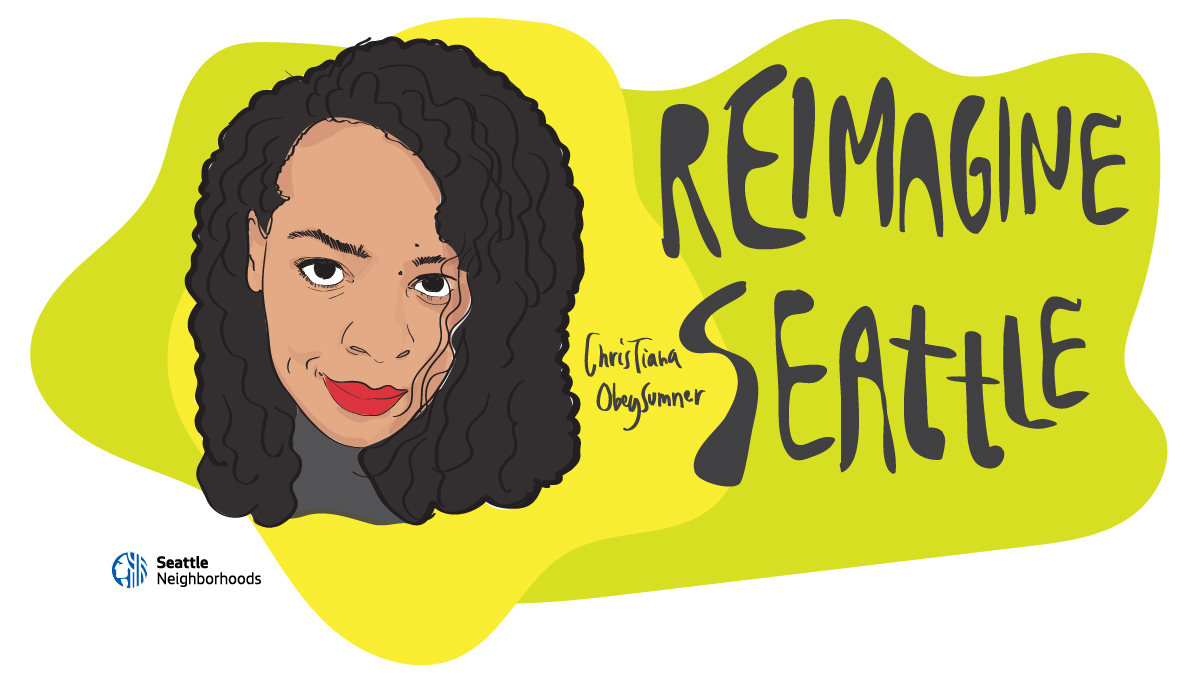
The challenges of the past two years have changed the way we live, the way we work, and the way we show up for each other. They have also given us a rare chance to collectively reimagine our future. Through the Reimagine Seattle Storytelling Project we invite community members to reflect on their current experiences in Seattle, how they have been impacted by recent events, and their hopes for the future of our city.
Hindsight – Reflections on 2020
by ChrisTiana ObeySumner
I have been calling 2020 the “existential master class in inequity” because it was the year that the universe kept pelting society in the face with glaringly obvious injustices and systemic violence towards communities who’ve been trying to tell us this whole time. Being a consultant, advocate, organizer, board member, business owner, and pissed-off constituent, I grappled through the hellscape through my work and by researching and crying and fighting and activating and witnessing and holding space and screaming from my soul into the white noise of Aurora Avenue. In reflection, I’ve found so many lessons and wisdom sprouting forth from the remnants of my former understanding and awareness of things.
When asked to write this piece, I was gifted an opportunity to reflect more on what some of those lessons were. Before I start, I want to preface this as not a proclamation of “this is,” but an invitation to share in examining “is this?” A quote I once heard but cannot find attribution for went, “When I make a statement, I implore you to always understand it as a question.” I never wish to indicate that I have “the answer.” I’m still trying to find it myself. Sharing space with dozens of people over the past year who were also on their search for meaning provided a much-cherished dimension to what I was enduring and processing, even if the revelation came with heartbreak.
Often, when people ask how they can proactively address equity issues within their organizational or community spaces, I tell them it’s going to take a “Both/ And” approach. On one hand, it is absolutely imperative that we address and dismantle the systems, policies, laws, constructs, institutions, and legacies of violence and harm in our society that disproportionately impact Black and brown, disabled, queer, trans and nonbinary, poor, sick, and so many more intersecting communities. And at the same time, we must remember that all these things are the result of people’s actions and behavior. My belief has been strengthened that the biggest confounding variable to any equity initiative is humans. Not just certain humans, but most – if not all – humans. I say this as someone who continues to see themselves as part of this fold. This is not to be judgmental as if the confounding variable must always be catastrophic, but to acknowledge the near certainty of catastrophe without an attuned and active awareness to reason backward.
Reasoning backward is a phrase from the first Sherlock Holmes story, A Study in Scarlet. Dr. Watson and Holmes were still getting to know each other in their new living and working arrangement, working out the details of their spoonie care web through the awkward intimacy of establishing the terms of engagement with a new live-in partner and caregiver. In chapter 7, Watson asked how Sherlock was able to solve the mysteries so well, and Sherlock replied:
“Most people, if you describe a train of events to them will tell you what the result would be. They can put those events together in their minds and argue from them that something will come to pass. There are few people however who, if you told them a result, would be able to evolve from their own inner consciousness what the steps were which led up to that result. This power is what I mean when I talk of reasoning backward…”
In terms of equity work, I’ve seen this perspective applied similarly: Most people, if you broach discussions around systemic and historical inequity, will be able to identify and speak to the ways in which disparities continue and are even worsening. They can refer to social and racial equity concepts and calls to action erupting from impacted communities, and hold interminable discourse around the most emerging ways these systems and institutions perpetuate, sustain, uphold, and protect inequity and injustice. There are few who, when faced with an issue of inequity and historical harm, will look upstream for the social, political, cultural, historical, systemic, etc. impetus that led to the inequities we continue to face and fight today.
This latter part is imperative, as this last year in particular showed us how deep the systemic and historical toxicity goes – way beyond the current foundations of our inequitable and violent structures. It’s in the soil, the mycelium, the water table, soaked through the foundation, oozing through the mantle, into the core of our society and what it has meant to exist and survive it at the intersections of the communities most impacted. As the old saying goes, “a river is the culmination of a valley.” A river holds both messages from upstream, as well as clues from the firmament through which the water travelled on its way to the river. My field guide to this part of the work has been transformative justice, which I’ve been calling transformative practice after it was suggested during a debrief at a disability justice retreat. Regardless of the name, the framework and approach seek to reason backward from an instance of harm. It centers the person who experienced the harm, which is to also center impact over intent.
You know the old saying, “the road to hell is paved with good intentions?” That’s the snarky definition of impact over intent. I first heard this saying at a rally in Westlake Park, and it made so much sense. Often there is this tendency for equity work to become stalled as the matter of “intention” versus “perception” is indefinitely debated. To put it bluntly: It honestly doesn’t matter if you intended to harm, or you believe the other person’s call-in to your harm is “only their perception” of the matter. This is your perception too. What matters is that harm was done. And accountability and parity are not harm. To have an impact over intent mindset to me means that you will always center accountability and parity in situations of harm. This doesn’t mean doing so masochistically and causing yourself retributive harm. Transfer of disparate power and resources is not harm, it’s recalibration. And restructuring is a really hard, collective process that requires a lifetime commitment to a shared agreement and covenant to social and racial equity – even if it’s as basic as agreeing to move parity forward in systemic and historical areas of inequity.
Everything to this point is aspirational if we do not take the risks needed and lean into the bone-chilling discomfort of radical, active, transformative, intentional change – down into the soil, the mycelium, the water table, soaked through the foundation, pushing through the mantle, into the core of our society and what it has meant to exist and survive at the intersection of the communities most impacted. This will mean all of us – myself included – will need to explicitly and consistently consider all those confounding human variables into our strategy and framework for how to make social and racial equity work effective, collective, and sustainable. Fear of risk (to ego, to access, to power, to resources, etc.) and fear of discomfort are not only traditional human things, but things that really come into play when a social/ cultural/ political threat to the system emerges. We’ve also been socialized and conditioned to protect it. It’s been built into the framework.
For example, we’ve seen millions of people decide to vehemently protest against wearing face masks because… rights? It is 2020’s Allegory of the Cave. The TL;DR is that three folks were chained in such a way that they could only see a wall. There was a light source behind them, and they could see the shadows of the world. One of them broke free and realized the shadows they thought to be real were truly just shadows. When they tried to free and show their cohorts, they were attacked because the others insisted the shadows were actual reflections of life. I always wondered whether it was fear of risk or fear of discomfort that kept them from turning around. Do folks truly believe they would risk their freedom by protecting themselves from a deadly disease, or do they deny the disease because the reality of it is too uncomfortable and they’ve barred it from their consciousness?
Paraphrasing Einstein, when we are trying to consider a solution to a problem, we can’t use the same frame of thinking that created the problem in the first place. I would also add, we can’t use frameworks that sustain or protect the problem either. This will mean taking risks through proactive innovation and radical, transformative systems and culture changes. Begin to approach your discomfort and share space with it. Examine it and consider what you need to remain whole.
Finally, let’s hold space with ourselves. Let’s ground our understanding of purpose in this work and how we can make it sustainable, if even a little bit. Why are you doing this? Why do you care about equity? What are you doing to move the work forward? Where do you feel twinges of resistance to change? What does burnout look like in your body? How are you sustaining yourself? Who is your care pod? Ensure that you are taking care of yourself – especially if you are like me and doing this work out of survival and a need to move the work of my elders and ancestors forward. I am called to do this work and dismantle these structures of inequity, but I don’t need to use my bodymind as a battering ram if I don’t choose to. In holding space with myself as a Black and Indigenous, disabled, sick, mad, queer, nonbinary system, I must also save space for repair – a practice I did not observe throughout 2020. But I intend to.
